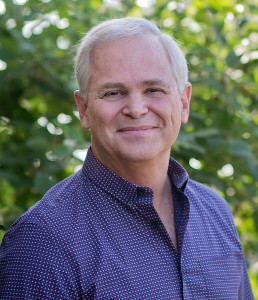
Hold your own leadership conference for more leadership maturity and better unity.
Every church leader I know loves to attend a great conference.
We love the learning, and we love to expose our people to inspiration and training that will take them, and our churches, to the next level. And we love the atmosphere.
There is explosive power in any room where leaders gather.
During New Song’s earliest years, I maintained perfect attendance at Willow Creek’s Leadership Summit. The conference breathed life into me. I flew a team to Chicago with me every year.
When The Summit decentralized, I was able to bring even more people as we drove an hour to attend via video conference.
The experience was so inspiring that I wanted every leader and wanna-be-leader to experience it.
If you’re a pastor or church leader, you’re probably nodding your head right now. Every time you experience a great conference, half of you is pumped, and the other half is thinking about all the people you wished you’d brought with you.
Five years ago I did some focused thinking on this. “Why weren’t more people attending leadership conferences with me?” The two biggest reasons were time and money. Getting off work, traveling, and plunking down several hundred dollars for a conference is hard to do – and even harder to sell.
My next thought was, “How could we eliminate the time and money barriers?”
For years I’d been purchasing the conference videos to show at home to those who missed them. In 2006, I put together a line-up of the best speakers in my video library, and New Song hosted our own church leadership conference. Those were the best three days of training in our church’s history!
Since then, we’ve held our own conference every year, and it continues to get better. We’ve learned a few things over the years.
10 Reasons to Hold your own Church Leadership Conference
1. Quality
Every conference I attend has a few sessions that miss the mark.
By showing videos, I can show “the best of” Catalyst, The Summit, and other conferences held around the country. You’d think seeing the speaker on video would diminish the experience, but it doesn’t. Many conferences are so large, you watch the speaker on a screen anyway. And some (like The Summit) are actually broadcast a few hours after the live event anyway.
What’s the difference between a delay of two hours and a delay of ten months?
Before each speaker, I stand up and explain why we’ll be watching this particular person, and what it is they have to offer us.
After many of the speakers, we’ll either hold a large group discussion of what we learned, or break into small group discussions. Learning retention and implementation is far higher in this format.
2. Cost
Most conferences charge a few hundred dollars, plus gas, meals, and sometimes lodging. New Song used to spend upwards of $3,000 to send key staff and volunteers to “live” conferences. Now, we ask attendees to pay $30 each. For that, they get a conference binder, snacks, meals, and a few surprises along the way.
Instead of spending thousands of dollars, our only expense is the cost of the videos, which we used to buy anyway. So many people are now exposed to the videos that they become part of our culture.
Our Community Life Pastor lends them out to small groups throughout the year.
3. Attendance
In our final year of The Summit live, we had 38 people attend. In our first year of “New Song Summit,” we had 110. This year, we were up to 147.
Most conference run from 8:30 a.m. to 4:30p.m., with a 90 minute lunch break. That’s 6 ½ hours of actual conference time. We run our conference from 3 p.m. to 9 p.m., including discussion during dinner, so people can put in two-thirds of a workday and still get six hours of conference. Plus, those who simply can’t get off work show up at 5:30 or 6 p.m. and experience three or more hours worth each evening.
4. Unity
I can’t explain it fully, but there is incredible unity when more than 10% of your church experience a conference together. We worship, we laugh, we cry, we discuss together at a depth that can’t take place during the normal pace of life. We held this year’s conference three weeks ago and I am hearing buzzes and seeing ripples from it all over the church.
5. Influence
Because it’s our conference, I can personally influence its direction and outcomes.
We run our conference from Thursday afternoon through Saturday morning. I do the opening session, celebrating where we’ve been over the past year and building hopes and expectations for what we’ll experience together over the ensuing 2 ½ days.
I get to set the tone and direction for where we will go throughout the conference.
6. Theme
This year’s theme was “Experiencing God at a Deeper Level.” I’ve discovered that most people don’t think of themselves as leaders, and therefore, aren’t attracted to leadership themes, or leadership conferences.
Instead of calling ours a “Summit” or including “Leadership” in the title, we call it “Oasis,” and promise folks spiritual refreshment if they’ll come.
Learning about leadership is so inspiring, that so far, no non-leader has wised up to what we’re actually doing!
7. Prayer
Because we control the pace of the conference, we budget time for prayer together after each session. Talk about impacting! When a significant portion of your church prayers over significant topics that are fresh on their minds, God hears and responds!
We keep our Prayer Room open throughout the conference so people can meditate and pray there if they’d like. Many people stay late into the night “debriefing” with the Lord about what He’s said to them throughout the day.
8. Interviews
During our first year, the sound system wasn’t working right during our opening worship set, so the worship leader cut the session short. That left me with an extra 20 minutes before the final speaker that evening.
To fill the time, I pulled a founding member out of the audience and interviewed him about what it was like in the early years of our church. I did the same thing with another founder the following evening.
A few days later I asked some of our younger members what they liked most about Oasis. They said, “The interviews!
They helped us to understand the church’s history and get to know some people we’ve never known before.” Now we build interview time into the conference schedule.
8. Awards
During our second year, several of our staff members reached the five and ten year marks of their service with us. I handed them plaques and we thanked God for them.
Since then we’ve added “Entrepreneurial Faith” awards for those who’ve started significant ministries, and this year I honored our Board Chairman with a dinner coupon.
This “family recognition” time bonds our leadership more deeply than I would have imagined.
9. Extended Worship
Being together over 2 ½ days gives us freedom to spend time in extended worship. Our sets can run longer than at a normal weekend service, giving us leisure to move into God’s presence together.
Whenever you attend a conference, you learn new songs. We do the same. We’ll do an extended worship set before two of the speakers each day, mingling new songs in with familiar favorites.
By the time the conference is over, our core has mastered some new songs, which we’ll introduce to the church over the next few weeks.
10. Goal-Setting
When I used to take folks to “live” conferences, I would hope and pray they would come home with specific action plans. Now, I build it into the conference experience. Our Saturday morning opens with great worship, one final video speaker, then a vision-casting message by me.
During the talk, I ask everyone to prayerfully consider what part they should play in our plans for the year. I hand out a sheet of questions to work through (like, “What three things do you want to put into action from our time together?” “How do you want to serve the Lord in this coming year?”)
Then ask them to share their answers in groups, and pray for one another. We close with a commitment song and people walk out filled and ready to serve.
It Takes Work
I should admit to you that I pour significant energy into preparing and emceeing Oasis.
I come away from it exhilarated, but more exhausted than refreshed. The same goes for the conference coordinator, meal-server, and worship leader. The four of us need some down time when it’s over.
I encourage you to experiment with your own annual conference, and plan on having someone else preach your weekend services the week you hold it.
But it’s more than worth it.
Following our Thursday sessions this year, I received emails from several of our key volunteers and two of our staff members praising my efforts. The following evening, I got more emails, including one from my own son, telling me what a great leader I am.
After our final session I introduced myself to a lady I had seen before but never met. She’s become a Christian, and her husband is following close behind. This lady said to me, “This conference has changed my life! I can’t wait to get home to share everything I’ve learned with my husband. We’re ready to jump with both feet!”
Needless to say, I don’t normally receive this much positive feedback after a weekend service.
What’s Next?
There is something powerful about an extended conference. It fills your people’s tanks. It can also raise your stature in their eyes.
Do you see yourself holding a leadership conference at your church?
Further Reading
- How to Use Board and Staff Retreats to Accelerate Evaluation and Growth
- I Need Help to Make the Most of Summer
- 10 Personal Tests to Make Sure You are your Church’s Best Asset
 Hal Seed is the founding and Lead Pastor of New Song Community Church in Oceanside, CA. He mentors pastors who want to lead healthy, growing churches with resources at www.pastormentor.com.
Hal Seed is the founding and Lead Pastor of New Song Community Church in Oceanside, CA. He mentors pastors who want to lead healthy, growing churches with resources at www.pastormentor.com.
Start Here to learn more about the resources available for you at PastorMentor.
Post originally published in August 2010.
Leave a Reply